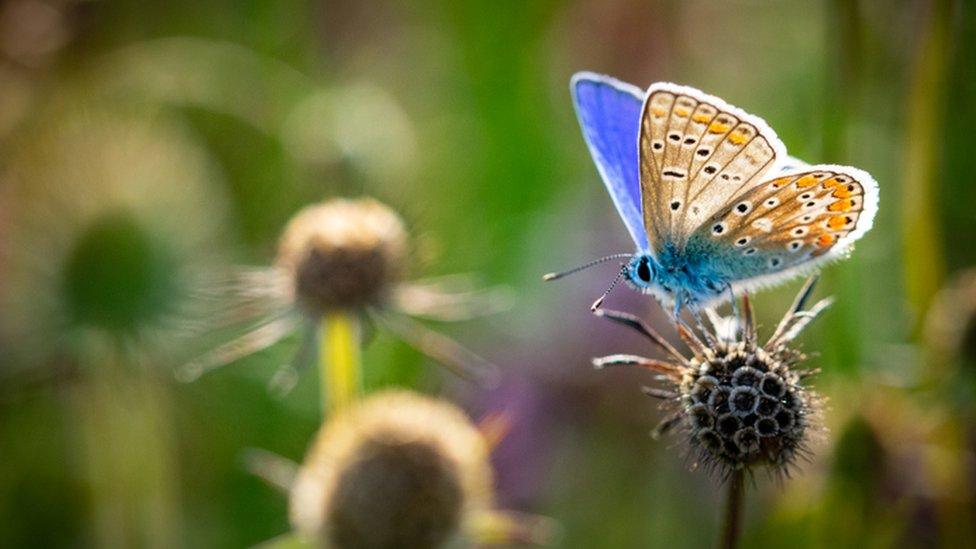Big Butterfly Count: Numbers are up, but habitats still struggling
- Published
- comments

The results of this year's Big Butterfly Count are in - did you take part? Let us know in the comments
Butterfly numbers in the UK are higher than they have been in the past few years.
The information comes from the Big Butterfly Count, which takes place every year.
This year's numbers show butterflies are doing better than the past four years of counts, but their habitats are still under threat.
Experts say the numbers are still lower than they were when the Big Butterfly Count started 14 years ago.
What is the Big Butterfly Count?
Do you ever see butterflies near you?
Every year, people across the UK are invited to note down every time they see a butterfly, and what type of butterfly it is.
The count takes place during summer, when butterfly numbers are highest.
The plan is to work out what impact climate change is having on butterfly numbers.
Getting normal people to take part in big research projects like this is called citizen science. Nearly 95,000 people took part this year.
What do this year's numbers show?
It's been a good year for the red admiral butterfly!
As different numbers of people take part every year, the result of the butterfly count is based on how many butterflies were found per sighting.
Sightings last for 15 minutes - people go to a location and try to count how many butterflies they see.
This year, an average of 12 butterflies were seen per sighting - last year it was only nine.
The more people that take part in the count, the more reliable the results are likely to be. This is because there are more people to take part in sightings, so you get more data.
The Red Admiral was the most-spotted butterfly this year - there were nearly 250,000 sightings.
What can be done to help butterflies?
Butterflies love flowery environments like this one - but climate change is putting them at risk
Butterfly Conservation - the group that runs the count - said despite good numbers this year, butterfly numbers are still much lower than they were 14 years ago.
This is because of habitat loss - butterflies usually need flowery meadows, or forests to live.
Butterfly Conservation have been encouraging people to create 'wild spaces' for butterflies - for example an area of long grass if you have a garden, or planting nectar-rich flowers on a balcony.
Have you noticed more butterflies this summer? Let us know in the comments...
- Published14 September 2023
- Published16 July 2023
